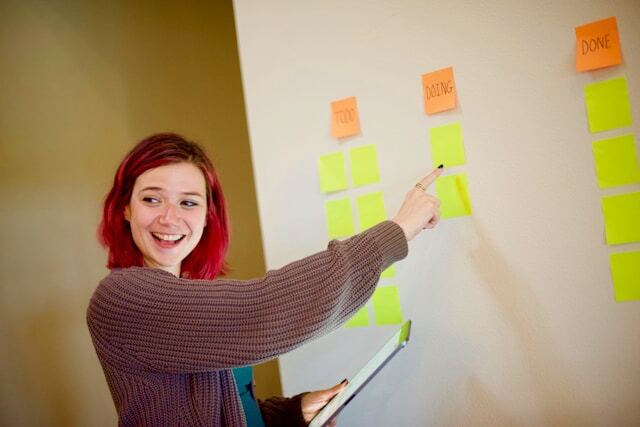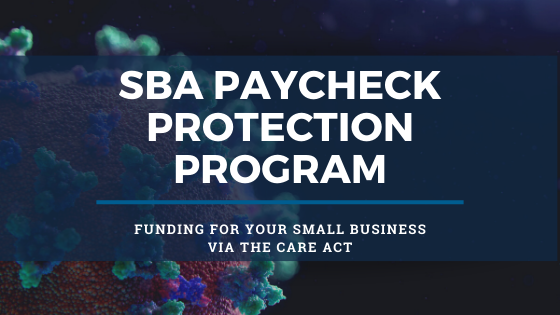1 min read
Optimizing the Onboarding Process: Techniques for Better Employee Integration
Picture this: It’s your new hire’s first day. They walk in, eager and excited to start their new job. But instead of a warm welcome and clear...

Every accounting firm owner knows the pain: projects that drag on past deadlines, clients who feel disconnected from the process, team members juggling too many competing priorities, and the constant stress of never quite knowing if you're delivering what clients actually need. Sound familiar?
After six years of running my firm using what I now call "Ambiguous Project Management" – essentially hoping projects would somehow magically complete themselves – I discovered that the software development world had already solved these exact problems decades ago. The solution? Agile Project Management, adapted specifically for the unique challenges of client services.
Before diving into solutions, let's quantify the problem. Poor project management in accounting firms typically results in:
40-60% project overruns on time estimates
Client satisfaction scores below 7/10 due to communication gaps
Staff utilization rates under 75% because of constant context switching
Revenue leakage of 15-25% from scope creep and untracked work
Owner burnout from being the bottleneck on every client interaction
These aren't just operational hiccups – they're business-threatening issues that compound over time. The larger your practice grows, the more these inefficiencies multiply, creating a ceiling on your firm's potential.
Traditional Agile was designed for building software products, but accounting services have unique characteristics that require thoughtful adaptation:
Regulatory Constraints: Unlike software features, tax deadlines and compliance requirements aren't negotiable. Our "sprints" must align with statutory deadlines and filing requirements.
Client Knowledge Gaps: Software users often know what they want; accounting clients frequently don't understand what they actually need. This requires more extensive discovery and education phases.
Varying Complexity: A simple tax return versus a complex reorganization requires dramatically different approaches, yet both need predictable processes.
Seasonal Demands: Unlike software development's steady pace, accounting has intense busy seasons that stress-test any project management system.
Understanding these differences is crucial for successfully implementing "Agile for Accounting."
The most critical insight I learned is that effective project management begins before the client says yes. This pre-engagement phase is where most firms lose control of scope, timeline, and client expectations.
Replace ad-hoc consultation calls with a systematic discovery process:
Before any client conversation, send a brief questionnaire covering:
Current business structure and operations
Specific challenges they're facing
Previous accounting relationships and pain points
Timeline expectations and constraints
Budget parameters (initial range)
Use a standardized agenda that covers:
Business Understanding (20 minutes)
Core business model and revenue streams
Key stakeholders and decision-makers
Current financial processes and pain points
Growth plans and strategic objectives
Technical Requirements (15 minutes)
Current software and systems
Reporting needs and frequencies
Compliance requirements and deadlines
Integration requirements with existing tools
Project Definition (20 minutes)
Specific deliverables and success criteria
Timeline constraints and flexibility
Resource availability from client side
Communication preferences and frequency
Relationship Dynamics (5 minutes)
Decision-making process
Previous professional service relationships
Expectations for ongoing communication
Definition of project success
Create a standardized template that captures:
Primary Objective: What success looks like
Secondary Goals: Nice-to-have outcomes
Critical Constraints: Non-negotiable limitations
Decision Maker: Name, role, communication style
Day-to-Day Contact: Primary working relationship
End Users: Who will use our deliverables
Influencers: Who else impacts success
Current Systems: Software, processes, workflows
Data Sources: Where information lives
Reporting Recipients: Who needs what information
Integration Points: How our work connects
Hard Deadlines: External constraints
Preferred Timeline: Client's ideal schedule
Scope Boundaries: What's included/excluded
Success Metrics: How we'll measure achievement
After the consultation, synthesize findings into a clear project charter:
Problem Statement: In 2-3 sentences, describe the current state and why it's problematic.
Solution Overview: High-level approach and methodology.
Deliverables: Specific, measurable outputs the client will receive.
Timeline: Major milestones with realistic dates.
Investment: Transparent pricing with scope boundaries clearly defined.
Success Criteria: Measurable outcomes that define project completion.
Assumptions: What we're assuming about client cooperation, data availability, etc.
Exclusions: Specifically what's NOT included to prevent scope creep.
While the original post mentions Accelo, the specific tool matters less than how you configure it. Key requirements for any project management platform:
Client → Project → Sprint → Task structure
Template-based project creation
Role-based access control
Time tracking integration
Client portal access
Automated progress updates
File sharing and collaboration
Internal team communication
Real-time project dashboards
Utilization tracking
Budget vs. actual reporting
Client satisfaction metrics
Adapt traditional 2-week software sprints to accounting realities:
1-3 weeks depending on project complexity
Simple compliance work: 1 week sprints
Complex advisory projects: 2-3 week sprints
Year-end processes: Custom sprints aligned with deadlines
Sprint Goal Definition: What specific value will we deliver?
Task Breakdown: Divide work into 2-4 hour chunks
Capacity Planning: Match tasks to individual team member availability
Client Checkpoint: Confirm priorities and expectations
Sprint Commitment: Team agrees to deliverables
Defines business requirements and priorities
Provides timely feedback and approvals
Makes decisions on scope changes
Participates in sprint reviews
Facilitates sprint planning and retrospectives
Removes blockers and impediments
Ensures process adherence
Coaches team on Agile principles
Estimate and complete work
Participate in daily standups
Deliver committed sprint goals
Continuously improve processes
Traditional software standups ask: "What did you do yesterday? What will you do today? What's blocking you?"
For accounting teams, enhance this with:
Client Impact: How does today's work move client goals forward?
Quality Check: Any questions about technical standards or compliance?
Capacity Alert: Any emerging capacity constraints or opportunities?
Learning Opportunity: Knowledge sharing from complex problems solved
Unlike software demos, accounting "demos" focus on:
Monthly team retrospectives should address:
Process Efficiency: What slowed us down? What accelerated progress?
Client Relationship: How can we improve client experience?
Technical Mastery: What skills or knowledge gaps emerged?
Tool Optimization: How can our systems better support our work?
As your firm grows, you'll manage multiple projects simultaneously. Key strategies:
Create a firm-wide view showing:
All active sprints across all clients
Resource allocation and conflicts
Critical path dependencies
Capacity availability for new work
Track team member allocation across projects:
|
Team Member |
Project A |
Project B |
Project C |
Capacity |
|
John Smith |
40% |
30% |
0% |
30% |
|
Jane Doe |
60% |
0% |
2% |
15% |
When conflicts arise, use clear criteria:
Regulatory deadlines (non-negotiable)
Contractual commitments (high priority)
Strategic client relationships (important)
Operational improvements (when capacity allows)
Provide clients with visual progress updates:
Sprint Progress: Percentage complete with specific accomplishments
Timeline Status: On track, ahead, or behind with specific dates
Upcoming Decisions: What client input is needed when
Budget Status: Spending vs. budget with explanations for variances
When scope changes arise:
Immediate Acknowledgment: "We understand you need X"
Impact Assessment: "This would affect timeline/budget by Y"
Options Presentation: "Here are three ways to proceed..."
Decision Documentation: Formal change order process
Sprint Adjustment: Modify current or future sprints accordingly
Implement quality checkpoints throughout each sprint:
Peer Review: All work reviewed by another team member
Client Checkpoint: Interim reviews for major deliverables
Technical Review: Compliance and accuracy verification
Final QA: Comprehensive review before client delivery
Track key metrics and improve systematically:
Estimation Accuracy: Planned vs. actual time by project type
Defect Rates: Errors found after delivery
Client Satisfaction: Regular feedback collection and analysis
Team Velocity: Work completed per sprint over time
Track client satisfaction and referral likelihood
Target: 50+ (industry average for professional services)
Measure quarterly with brief surveys
Follow up on detractor feedback immediately
Percentage of projects delivered on time and budget
Target: 90% on-time, 95% within budget
Track by project type and team member
Identify patterns in overruns
Average number of scope changes per project
Baseline: Establish current state
Target: Reduce by 50% through better discovery
Track reasons for changes to improve processes
Productive time as percentage of available time
Target: 75-80% (allowing for non-billable activities)
Track by individual and team
Identify capacity optimization opportunities
Actual time vs. estimated time by task type
Target: Within 20% variance
Improve through historical data analysis
Create estimation guidelines by service type
Percentage of sprint commitments delivered
Target: 90% completion rate
Track impediments and blockers
Adjust planning process based on results
Total project value divided by number of clients
Track trends over time
Identify upselling opportunities
Compare against industry benchmarks
Profitability analysis by service type
Identify most/least profitable services
Adjust pricing and processes accordingly
Focus marketing on high-margin services
Time from invoice to payment
Target: 30 days average
Track by client and project type
Implement automated follow-up processes
Clients pushing back on structured communication, preferring "just call when you need something"
Lead with value: "This process ensures nothing falls through the cracks"
Start with willing clients as proof of concept
Show transparency benefits through the client portal
Demonstrate faster problem resolution through structured communication
Staff reverting to old habits, inconsistent process following
Involve team in process design decisions
Provide comprehensive training with role-playing exercises
Celebrate early wins and improvements
Address concerns through regular retrospectives
Connect process improvements to professional development
Agile processes breaking down during busy season
Design "crisis mode" Agile processes for peak periods
Pre-plan capacity allocation for predictable busy periods
Maintain core Agile principles while simplifying execution
Use retrospectives to improve seasonal planning year over year
Project management tools not integrating with existing accounting software
Prioritize tools with strong API integration capabilities
Implement data bridges between systems
Accept some manual processes initially, improve over time
Consider switching to more integrated platforms during natural upgrade cycles
Conduct current state analysis of project management practices
Select and configure project management platform
Develop client discovery templates and processes
Train core team on Agile principles
Select 2-3 pilot clients for initial implementation
Create project charters using new discovery process
Set up first sprints with clear goals and deliverables
Begin daily standups with core team
Conduct first sprint retrospectives and adjust processes
Expand pilot to additional projects
Develop client communication templates and dashboards
Train additional team members
Provide pilot clients access to project tracking
Gather client feedback on new processes
Refine communication frequency and formats
Document lessons learned and best practices
Roll out Agile processes to all new projects
Transition existing projects to new framework where feasible
Implement measurement and reporting systems
Create standard operating procedures
Analyze first 90 days of metrics and client feedback
Conduct comprehensive team retrospective
Plan next phase of improvements and advanced features
Celebrate wins and address remaining challenges
Use historical data to improve project planning:
Seasonal Adjustment Factors: Modify estimates based on time of year
Client Complexity Scoring: Rate clients on factors affecting project difficulty
Skill-Based Estimation: Adjust estimates based on team member expertise
Risk Scoring: Identify projects likely to have scope or timeline issues
Apply Agile principles to service offerings:
Tiered Service Levels: Different Agile processes for different client segments
Productized Services: Standardized sprints for common deliverables
Custom Agile Frameworks: Unique approaches for specific industries or service types
Transform your firm's culture through:
Continuous Learning: Regular training on Agile principles and accounting expertise
Experimentation Mindset: Encourage trying new approaches and learning from failures
Client-Centric Focus: Make client value the primary decision criteria
Transparent Communication: Open information sharing within the team and with clients
Based on implementing these principles across multiple firms:
35% increase in Net Promoter Score
50% reduction in client complaints
25% increase in client retention rate
40% increase in referral generation
30% improvement in project delivery timeline
45% reduction in scope creep incidents
25% increase in team utilization rates
60% reduction in project communication issues
20% increase in profit margins through better scope management
15% increase in revenue per client through improved service delivery
30% reduction in write-offs from untracked scope changes
25% improvement in cash flow through better client communication
Technology Costs: $50-200 per user per month for project management platform
Training Investment: 40-60 hours of team training over 3 months
Process Development: 20-40 hours of management time for setup
Temporary Productivity Loss: 10-15% during first month of implementation
Typical Payback Period: 4-6 months for most firms
The accounting profession is evolving rapidly. Clients expect more transparency, faster service, and better communication than ever before. Firms that continue to operate with "ambiguous project management" will find themselves at a competitive disadvantage.
Implementing Agile project management isn't just about better organization – it's about fundamentally transforming how you deliver value to clients. When done correctly, Agile becomes your competitive advantage, enabling you to:
Deliver more predictable results
Build stronger client relationships
Reduce owner dependence and stress
Scale your practice more effectively
Create a more engaging work environment for your team
The journey from ambiguous to Agile isn't always smooth, but the destination – a more profitable, scalable, and enjoyable practice – makes the effort worthwhile. Start small, measure results, and continuously improve. Your clients, your team, and your future self will thank you.
"Scrum: The Art of Doing Twice the Work in Half the Time" by Jeff Sutherland
"The Lean Startup" by Eric Ries (for continuous improvement principles)
"Getting Things Done" by David Allen (for personal productivity integration)
Certified ScrumMaster (CSM) training for key team members
Project Management Professional (PMP) certification
Local Agile user groups and meetups
When selecting project management tools, ensure they support:
Time tracking and billing integration
Client portal functionality
Sprint planning and tracking
File sharing and collaboration
Reporting and analytics
Mobile accessibility
Integration with accounting software
Customizable workflows and templates
Remember: The best project management system is the one your team will actually use consistently. Start simple, then add complexity as you master the fundamentals.
Ready to transform your practice? Start with one pilot client and one willing team member. Perfect your process with them before expanding firm-wide. The journey of a thousand successful projects begins with a single well-managed sprint.

1 min read
Picture this: It’s your new hire’s first day. They walk in, eager and excited to start their new job. But instead of a warm welcome and clear...

Think your business is profitable because there’s money in the bank? Think again.

1 min read
On March 27, 2020 The Coronavirus Aid, Relief, and Economic Security Act (aka the CARES Act) was signed into law. The CARES Act provides financial...